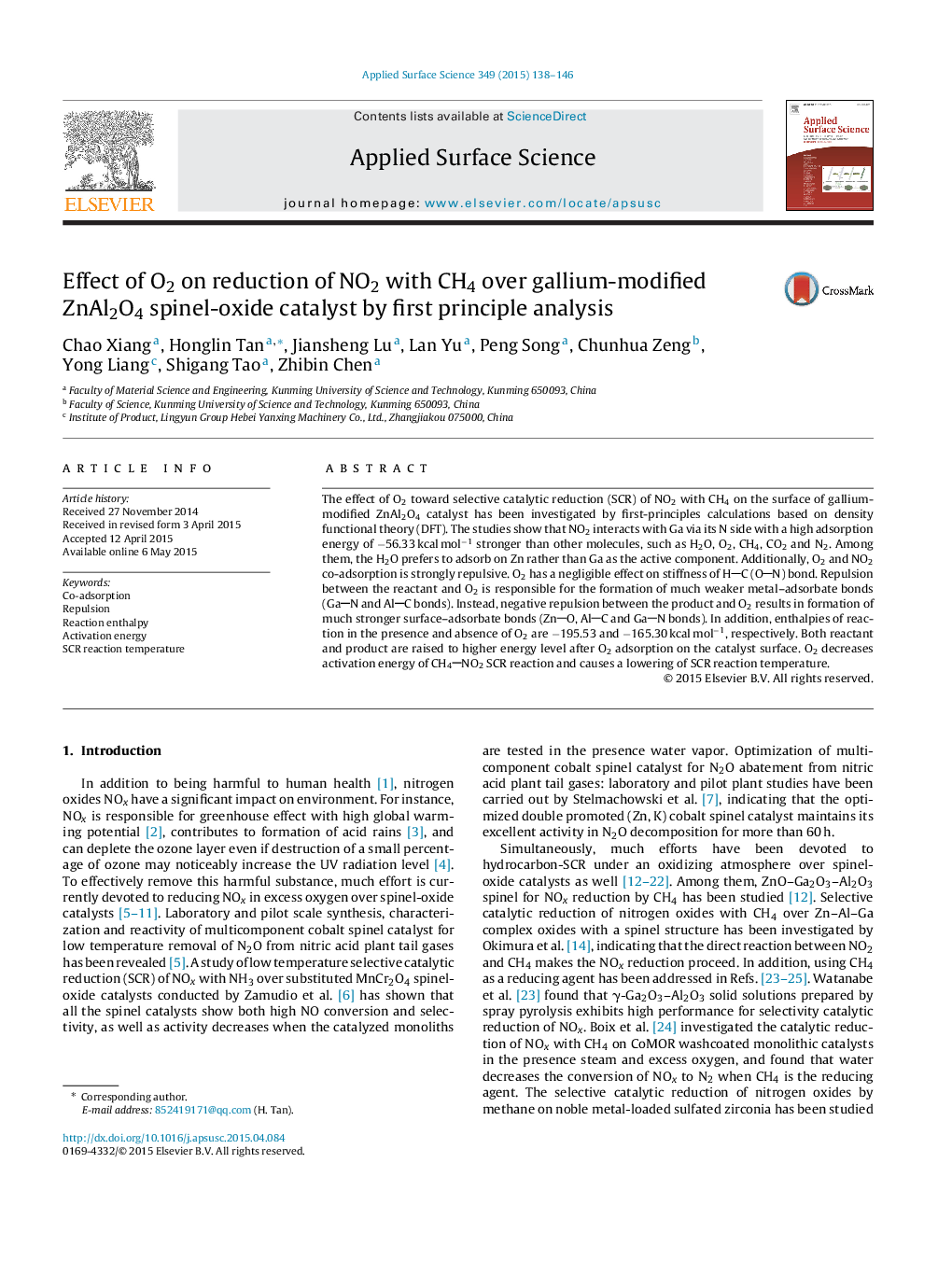| Article ID | Journal | Published Year | Pages | File Type |
|---|---|---|---|---|
| 5349319 | Applied Surface Science | 2015 | 9 Pages |
Abstract
The effect of O2 toward selective catalytic reduction (SCR) of NO2 with CH4 on the surface of gallium-modified ZnAl2O4 catalyst has been investigated by first-principles calculations based on density functional theory (DFT). The studies show that NO2 interacts with Ga via its N side with a high adsorption energy of â56.33 kcal molâ1 stronger than other molecules, such as H2O, O2, CH4, CO2 and N2. Among them, the H2O prefers to adsorb on Zn rather than Ga as the active component. Additionally, O2 and NO2 co-adsorption is strongly repulsive. O2 has a negligible effect on stiffness of HC (ON) bond. Repulsion between the reactant and O2 is responsible for the formation of much weaker metal-adsorbate bonds (GaN and AlC bonds). Instead, negative repulsion between the product and O2 results in formation of much stronger surface-adsorbate bonds (ZnO, AlC and GaN bonds). In addition, enthalpies of reaction in the presence and absence of O2 are â195.53 and â165.30 kcal molâ1, respectively. Both reactant and product are raised to higher energy level after O2 adsorption on the catalyst surface. O2 decreases activation energy of CH4NO2 SCR reaction and causes a lowering of SCR reaction temperature.
Related Topics
Physical Sciences and Engineering
Chemistry
Physical and Theoretical Chemistry
Authors
Chao Xiang, Honglin Tan, Jiansheng Lu, Lan Yu, Peng Song, Chunhua Zeng, Yong Liang, Shigang Tao, Zhibin Chen,
